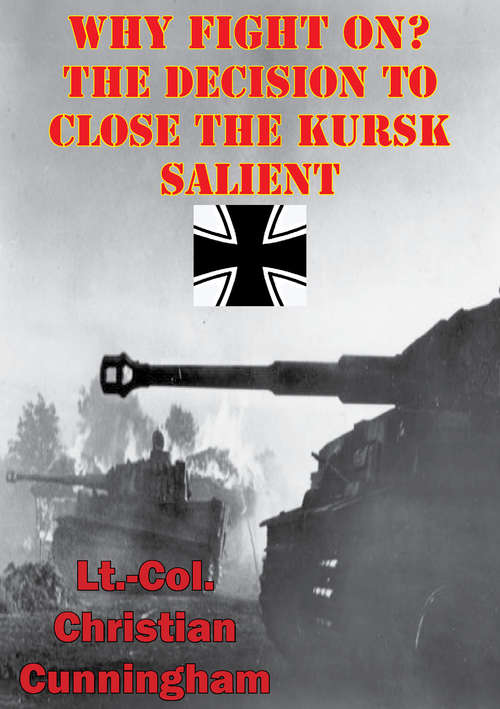Why Fight On? The Decision To Close The Kursk Salient
By:
Sign Up Now!
Already a Member? Log In
You must be logged into Bookshare to access this title.
Learn about membership options,
or view our freely available titles.
- Synopsis
- The Battle of Kursk in July of 1943 was a pivotal battle in the Russian-German conflict, 1941-1945. After the German attack failed, the Russians responded with a major offensive and gained the strategic initiative. From then on, the German army was only capable of a series of defensive stopping actions in failed attempts to thwart the advancing Red Army. The inevitable outcome was the fall of Berlin in May of 1945. There were a number of options Hitler and the German high command could have chosen in lieu of attack. The decision to choose offensive action becomes even more interesting upon examination of Germany's strategic situation. Tunisia, the last vestige of the German occupation of North Africa, was lost and Allied offensive action on the European continent was a real and imminent threat. There were also attrition issues, production problems, and differences of opinion between Hitler and key German generals. Finally, the northern and southern shoulders of the Kursk salient, the chosen points of attack, were heavily defended. What compelled Hitler and the German High Command to take such a gamble? What were the strategic issues that guided this decision? Was the outcome decisive? And finally, what other actions might have altered the outcome of the conflict?
- Copyright:
- 2014
Book Details
- Book Quality:
- Publisher Quality
- ISBN-13:
- 9781782897132
- Publisher:
- Pickle Partners Publishing
- Date of Addition:
- 03/05/18
- Copyrighted By:
- Pickle Partners Publishing
- Adult content:
- No
- Language:
- English
- Has Image Descriptions:
- No
- Categories:
- History, Military, Nonfiction
- Submitted By:
- Bookshare Staff
- Usage Restrictions:
- This is a copyrighted book.
